
Neapolitan pizza is more than just a delicious dish. It's a culinary tradition that dates back to ancient times and reflects the culture and identity of Naples, Italy. In this blog post, I will explore the origins of Neapolitan pizza, how it evolved over time, and what makes it so special among other types of pizza.
The Birth of Neapolitan Pizza
Pizza as we know it today (dough topped with tomatoes and cheese) was invented in Naples. Before the 1700s, flatbreads existed but were never topped with tomatoes, which is now a defining characteristic of pizza. Tomatoes were brought to Europe in the 16th century by explorers returning from Peru. However, many Europeans believed tomatoes were poisonous until poor peasants in Naples began to top their flatbread with them in the late 18th century. The dish soon became popular among locals and visitors alike.
The first documented pizzeria in Naples was Antica Pizzeria Port'Alba, which opened in 1738 as a street vendor and later became a permanent establishment. The pizzeria still operates today and claims to be the oldest pizzeria in the world. Another famous pizzeria is Pietro... e basta così (Peter... and that's enough), where baker Raffaele Esposito created Margherita pizza in 1889. He named it after Queen Margherita of Savoy who visited Naples with her husband King Umberto I. Esposito wanted to impress the royal couple with a patriotic pizza that resembled the Italian flag: red (tomatoes), white (mozzarella), and green (basil). The queen loved it so much that she wrote him a letter of appreciation. This event boosted the popularity of Neapolitan pizza across Italy and beyond.
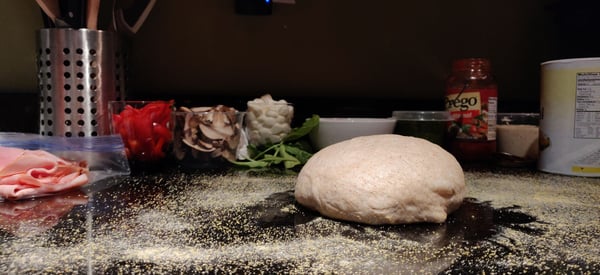
The Art of Neapolitan Pizza
Neapolitan pizza is not just any pizza. It has strict rules and regulations that must be followed by certified pizzerias that want to preserve its authenticity and quality. The Associazione Verace Pizza Napoletana (VPN) was founded in 1984 in Naples to protect and promote neapolitan pizza as a traditional specialty guaranteed (TSG) product. The VPN has several requirements for making Neapolitan pizza:
- The dough must be made with highly refined Italian type 0 or 00 wheat flour, natural yeast or brewer's yeast, water, and salt.
- The dough must be kneaded by hand or with a low-speed mixer and formed by hand without using a rolling pin.
- The dough must be left to rise for at least six hours at room temperature or up to 24 hours at cold temperature.
- The dough must be stretched into a thin disk of no more than 3 millimeters thick at the center and no more than one inch thick at the edge.
- The toppings must include San Marzano tomatoes or Pomodorino del Piennolo del Vesuvio tomatoes grown on volcanic soil near Mount Vesuvius; Mozzarella di Bufala Campana cheese made from water buffalo milk; extra virgin olive oil; fresh basil leaves; sea salt.
- The oven must be wood-fired at temperatures between 800 F to 900 F degrees.
- The baking time must not exceed 90 seconds.
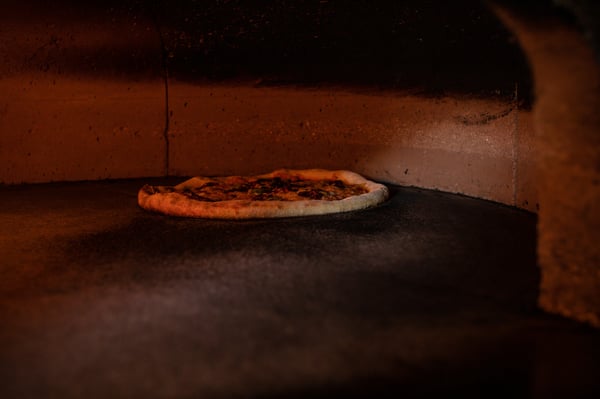 These requirements ensure that Neapolitan pizza has a soft, elastic, fragrant crust with charred spots, a balanced ratio of sauce to cheese, fresh ingredients that enhance its flavor and an irregular shape that reflects its handmade nature.
These requirements ensure that Neapolitan pizza has a soft, elastic, fragrant crust with charred spots, a balanced ratio of sauce to cheese, fresh ingredients that enhance its flavor and an irregular shape that reflects its handmade nature.
The Variations of Neapolitan Pizza
There are two main variations of Neapolitan pizza: marinara and margherita. Marinara is the older version that does not have cheese. It is topped with tomato sauce, garlic, oregano, and olive oil. It is named after "la marinara" (the seaman's wife) who would prepare it for her husband when he returned from fishing trips. Margherita is the newer version that has cheese. It is topped with tomato sauce, mozzarella cheese, basil leaves, and olive oil as mentioned above it is named after Queen Margherita who enjoyed it during her visit to Naples.
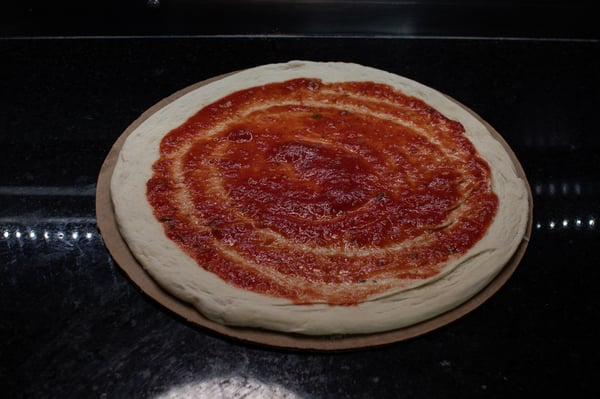
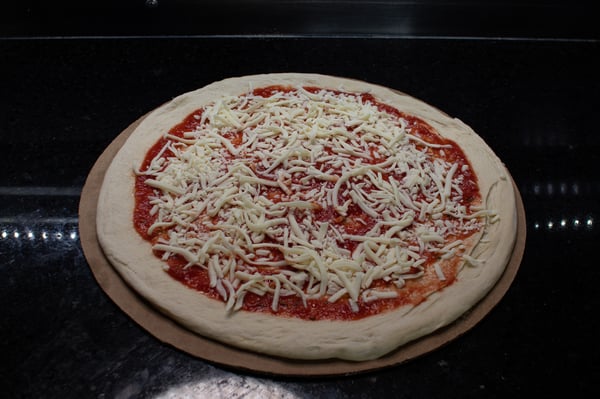 There are also some minor variations of Neapolitan pizza that add different ingredients to these two basic types. For example, pizza quattro formaggi (four cheese pizza, my favorite!) adds four types of cheese: mozzarella, gorgonzola, parmesan, and provolone; pizza capricciosa (capricious pizza) adds mushrooms, artichokes, ham, and olives; pizza diavola (devil's pizza) adds spicy salami. However, these variations are not officially recognized by the VPN and may not be considered authentic by purists.
There are also some minor variations of Neapolitan pizza that add different ingredients to these two basic types. For example, pizza quattro formaggi (four cheese pizza, my favorite!) adds four types of cheese: mozzarella, gorgonzola, parmesan, and provolone; pizza capricciosa (capricious pizza) adds mushrooms, artichokes, ham, and olives; pizza diavola (devil's pizza) adds spicy salami. However, these variations are not officially recognized by the VPN and may not be considered authentic by purists.
 Smoked Salmon & Dill Pizza
Smoked Salmon & Dill Pizza
The Influence of Neapolitan Pizza
Neapolitan pizza has influenced many other styles of pizza around the world. For instance, New York-style pizza; which I grew up eating and have a special spot in my heart for, is a descendant of Neapolitan pizza that was brought by Italian immigrants in the early 20th century. It has a thin crust that is crisp on the edges and foldable in the middle. It usually has more cheese than sauce and can be topped with various ingredients. Chicago-style pizza is another variation that we are all super familiar with here and was inspired by Neapolitan pizza but developed its own characteristics. It has a deep-dish crust that is filled with cheese and toppings and covered with tomato sauce.
Neapolitan pizza has also become a symbol of Italian cuisine and culture. In 2017, UNESCO declared the art of making Neapolitan pizza as an intangible cultural heritage of humanity. The recognition aims to protect and promote this ancient tradition that involves skills, knowledge, creativity, and social values.
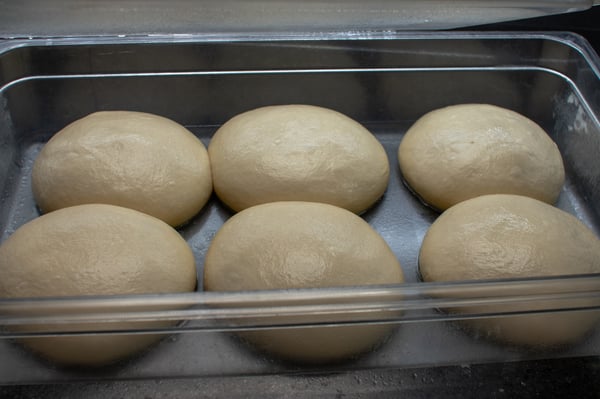
Tips for Making Neapolitan Pizza at Home
If you want to try making Neapolitan pizza at home, here are some tips to help you achieve a good result:
- Use high-quality ingredients such as type 0 or 00 flour, San Marzano tomatoes, Mozzarella di Bufala Campana cheese, and extra virgin olive oil.
- Make your own dough by mixing flour, water, yeast, and salt and kneading it by hand or with a low-speed mixer until smooth and elastic.
- Let your dough rise for at least six hours at room temperature or up to 24 hours in the fridge.
- Stretch your dough into a thin disk by hand without using a rolling pin.
- Preheat your oven to the highest temperature possible (ideally over 800 F degrees, most ovens max at 500-550 which is just fine for home use) and use a baking stone or steel to create a hot surface for your pizza.
- Top your pizza with a thin layer of tomato sauce, cheese, basil leaves, and olive oil and bake it for around 180 seconds until the crust is charred and bubbly or golden brown.
- You can also try preheating the oven to it’s max then and then using the broiler when the pizza goes into the oven to help get a higher temp.
- Enjoy your homemade Neapolitan pizza while it's hot and savor its unique flavor and texture!
 Hopefully this brief history on Neapolitan pizza and some tips on how to get the best results was helpful. If you are still struggling or don’t want to make the mess at home, join us at The Chopping Block for our Hands-On Neapolitan Pizzeria class on Thursday, April 27 at 6pm at Lincoln Square.
Hopefully this brief history on Neapolitan pizza and some tips on how to get the best results was helpful. If you are still struggling or don’t want to make the mess at home, join us at The Chopping Block for our Hands-On Neapolitan Pizzeria class on Thursday, April 27 at 6pm at Lincoln Square.
Sources:
- https://www.thespruceeats.com/what-is-neapolitan-pizza-2708762
- https://thepizzaheaven.com/neapolitan-pizza-the-ultimate-guide/
- https://en.wikipedia.org/wiki/Neapolitan_pizza
- https://italianfoodcompany.com/blogs/editorials/a-slice-of-history-traditional-neapolitan-pizza
- https://www.webstaurantstore.com/article/101/types-of-pizza.html


